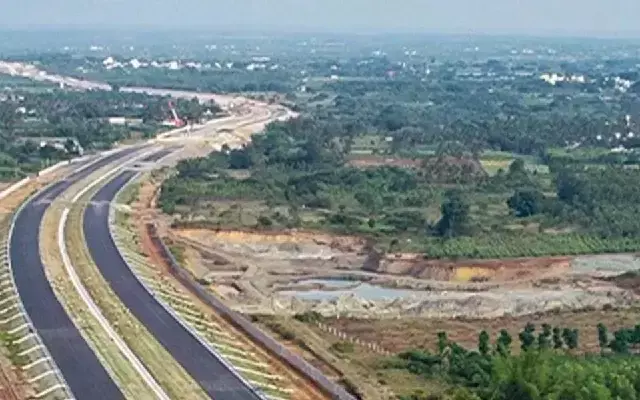
Karnataka Forms Panel to Review Stalled NICE Projects, Proposals
The Karnataka government has taken a significant step towards revitalizing its infrastructure development by establishing a new cabinet sub-committee to reassess unresolved matters concerning the Nandi Infrastructure Corridor Enterprise (NICE) initiatives. The committee will focus on two major proposals that have been stuck in limbo for some time – the reinstatement of the 110-km Bengaluru–Mysuru expressway and the development of a 13-km connecting road to Bidadi.
The decision to form the sub-committee comes at a time when Karnataka is facing significant infrastructure bottlenecks, particularly in the areas of road connectivity and public transportation. The Bengaluru–Mysuru expressway, in particular, has been a contentious issue for years, with numerous delays and disputes hindering its completion.
The expressway was initially conceived as a major infrastructure project aimed at reducing travel time between Bengaluru and Mysuru, two of the state’s largest cities. The project was touted as a game-changer for the region, promising to increase connectivity and boost economic growth. However, the project has been mired in controversy, with allegations of land acquisition issues, environmental concerns, and disputes over funding.
The 13-km connecting road to Bidadi, on the other hand, is a critical link that will improve connectivity between Bengaluru and the surrounding areas. The road will provide a vital alternative to the existing NH 209, which is often congested and prone to accidents.
The new cabinet sub-committee, comprising senior state government officials and experts, will review the stalled projects and propose solutions to overcome the existing hurdles. The committee will also identify potential areas of collaboration between the state government, NICE, and other stakeholders to ensure the successful completion of the projects.
The move is seen as a positive step towards revitalizing Karnataka’s infrastructure development, which has been hampered by various factors, including bureaucratic red tape, environmental concerns, and funding issues. The state government’s decision to form the sub-committee sends a strong signal that it is committed to reviving stalled projects and ensuring the development of critical infrastructure.
The Bengaluru–Mysuru expressway, in particular, has significant implications for the state’s economy and growth. The expressway will not only reduce travel time between the two cities but also boost economic activity, create jobs, and increase connectivity to other parts of the state.
The development of the 13-km connecting road to Bidadi, on the other hand, will improve connectivity to the surrounding areas and reduce congestion on the existing NH 209. The road will also provide a vital link to the upcoming industrial areas in the region, which are expected to create thousands of jobs and boost economic growth.
The state government’s decision to form the sub-committee has been welcomed by industry bodies and experts, who see it as a positive step towards revitalizing Karnataka’s infrastructure development. The move is also expected to send a strong signal to investors and businesses that the state is committed to developing its infrastructure and creating a business-friendly environment.
In a statement, the state government said that the sub-committee will work closely with NICE and other stakeholders to identify the challenges facing the stalled projects and propose solutions to overcome them. The committee will also review the existing land acquisition issues and environmental concerns to ensure that the projects are completed in a transparent and environmentally sustainable manner.
The decision to form the sub-committee is a significant step forward for Karnataka, which has been struggling to develop its infrastructure for years. The state government’s commitment to revitalizing its infrastructure development is expected to have a positive impact on the state’s economy and growth, creating jobs, boosting economic activity, and improving connectivity to other parts of the state.





